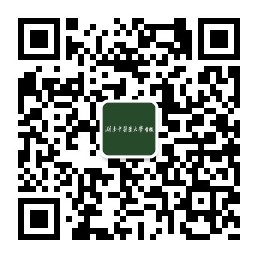| 引用本文: |
张琳曼, 李钦, 张庭瑞, 温伟波.清瘟解热方对湿热证型病毒性肺炎大鼠肺损伤及CCL3/CCR5信号通路的作用[J].湖南中医药大学学报,2024,44(11):1951-1958[点击复制] |
|
| |
|
|
| 本文已被:浏览 1703次 下载 811次 |
| 清瘟解热方对湿热证型病毒性肺炎大鼠肺损伤及CCL3/CCR5信号通路的作用 |
| 张琳曼,李钦,张庭瑞,温伟波 |
| (云南中医药大学, 云南 昆明 650021;云南省中西医结合慢病防治重点实验室, 云南 昆明 650021) |
| 摘要: |
| 目的 探讨清瘟解热方(以下简称QWJR)对湿热证型病毒性肺炎大鼠肺损伤及CCL3/CCR5信号通路的作用。方法 将48只大鼠随机分为正常组、湿热模型组、阳性药物组(甲泼尼龙)、清瘟解热低剂量组(QWJR-L)、清瘟解热中剂量组(QWJR-M)、清瘟解热高剂量组(QWJR-H),每组8只,雌雄各半,正常组自然环境饲养,其余各组湿热外因+内因饲养14 d。14 d后,除正常组气管注射50 μL PBS外,其余组均运用Poly(I:C)气管注射,建立湿热证型病毒性肺炎大鼠模型。造模2 h后,正常组和湿热模型组灌胃生理盐水,其余各组给予相应药物干预,连续给药3 d。收集样本后检测相关指标。(1)湿热证评价指标:大鼠症状、证候积分、体质量、血清总胆固醇(cholesterol, CHOL)、低密度脂蛋白胆固醇(low-density lipoprotein cholesterol, LDL-C)、高密度脂蛋白胆固醇(high-density lipoprotein cholesterol, HDL-C)含量、血常规;(2)肺泡毛细血管屏障变化、肺损伤情况:肺组织的干湿比、支气管肺泡灌洗液(bronchoalveolar lavage fluid, BALF)总细胞计数、BALF总蛋白浓度、HE染色观察大鼠肺组织病理变化;(3)趋化因子CCL3(CC chemokine Ligand 3, CCL3)/CC趋化因子受体-5(CC chemokine receptor 5, CCR5)通路及下游因子:qPCR法检测肺组织中CCL3、CCR5、磷脂酶C(phospholipase C, PLC)、蛋白激酶C(proteinkinase C, PKC)mRNA表达水平和Western-Blot法检测CCL3、CCR5、PLC、PKC蛋白表达水平。结果 QWJR干预后大鼠大便黏滞或溏泄伴臭秽,肛门红肿污秽情况有所减轻,大鼠湿热证候积分降低,血脂CHOL、LDL-C水平降低(P<0.05);血常规中WBC及NE水平较模型组降低(P<0.05);QWJR-M组和QWJR-H组肺组织W/D值、BULF中总蛋白含量、总细胞数均降低,且以高剂量组治疗效果最显著(P<0.01),并有效改善大鼠肺组织病理损伤;与模型组相比,阳性药物组、QWJR-H组大鼠CCR5、PLC、PKC蛋白表达水平降低(P<0.05,P<0.01),CCL3、CCR5、PLC、PKC mRNA表达量降低(P<0.05,P<0.01)。结论 QWJR可减轻湿热大鼠湿热症状,改善湿热证型病毒性肺炎大鼠肺部损伤情况,该作用可能是通过抑制CCL3/CCR5信号通路实现的。 |
| 关键词: 病毒性肺炎 清瘟解热方 肺损伤 湿热证 湿热证动物模型 CCL3/CCR5信号通路 |
| DOI:10.3969/j.issn.1674-070X.2024.11.003 |
| 投稿时间:2024-05-28 |
| 基金项目:国家自然科学基金地区基金项目(82260930;82060864);国家重点研发计划课题(2023YFF0724803);国家中医药管理局新型冠状病毒感染中医药应急专项课题(2023ZYLCYJ02-24);国家中医药多学科交叉创新团队项目(ZYYCXTD-D-202201);云南省科学技术厅中医联合专项项目(202101AZ070001-020);云南省科学技术厅重点研发计划项目(202103AC100005)。 |
|
| Effects of Qingwen Jiere Formula on lung injury and CCL3/CCR5 signaling pathway in rats with viral pneumonia of damp-heat pattern |
| ZHANG Linman, LI Qin, ZHANG Tingrui, WEN Weibo |
| (Yunnan University of Chinese Medicine, Kunming, Yunnan 650021, China;Yunnan Key Laboratory of Integrated Chinese and Western Medicine for Chronic Disease Prevention and Treatment, Kunming, Yunnan 650021, China) |
| Abstract: |
| Objective To investigate the effects of Qingwen Jiere Formula (QWJR) on lung injury and CC chemokine Ligand 3 (CCL3)/CC chemokine receptor 5 (CCR5) signaling pathway in rats with viral pneumonia of damp-heat pattern. Methods Forty-eight rats were randomized into normal group, model group, positive drug group (methylprednisolone), as well as low-, medium-, and high-dose QWJR groups (i.e. QWJR-L, QWJR-M, and QWJR-H groups), with eight rats in each group, half male and half female. The normal group was raised in a natural environment, while the other groups were subjected to both exogenous and endogenous damp-heat conditions for 14 days. After 14 days, except for the normal group which received a tracheal injection of PBS 50 μL, all other groups were administered with Poly(I∶C) via tracheal injection to establish a rat model of viral pneumonia with damp-heat pattern. Two hours after model establishment, the normal and model groups were gavaged with saline, while the other groups received corresponding drug interventions for 3 consecutive days. Samples were collected for the following measurements: (1) Evaluation indicators of damp-heat pattern: rat symptoms, pattern scores, body mass, serum levels of cholesterol (CHOL), low-density lipoprotein cholesterol (LDL-C), and high-density lipoprotein cholesterol (HDL-C), and blood routine test; (2) Changes in alveolar-capillary barrier and lung injury: measurement of the lung wet-to-dry weight ratio (W/D), as well as the total cell count and total protein concentration in the bronchoalveolar lavage fluid (BALF), and observation of pathological changes in the lung tissue using HE staining; (3) CCL3/CCR5 pathway and downstream factors: determination of CCL3, CCR5, PLC, and PKC protein and mRNA expression levels using qPCR and Western blot, respectively. Results After QWJR intervention, symptoms such as sticky or loose stools with a foul odor, and redness, swelling, and soiling around the anus were alleviated in the rats; the pattern scores for damp-heat were reduced, along with lower levels of serum CHOL and LDL-C (P<0.05); the levels of WBC and NE in the blood routine test were also lower than those of the model group (P<0.05). In the QWJR-M and QWJR-H groups, the lung W/D value and the total protein content and total cell count in BALF decreased, with the QWJR-H group showing the most significant therapeutic effect (P<0.01). Additionally, the pathological damage to the rat lung tissue was effectively reduced. Compared with the model group, the protein expression levels of CCR5, PLC, and PKC were lower in the positive drug and QWJR-H groups (P<0.05, P<0.01), and the mRNA expression levels of CCL3, CCR5, PLC, and PKC were also reduced (P<0.05, P<0.01). Conclusion Qingwen Jiere Formula can alleviate the symptoms of damp-heat and reduce lung injury in rats with viral pneumonia of the damp-heat pattern. The effects may be achieved through the inhibition of the CCL3/CCR5 signaling pathway. |
| Key words: viral pneumonia Qingwen Jiere Formula lung injury damp-heat pattern animal model of damp-heat pattern CCL3/CCR5 signaling pathway |
|

二维码(扫一下试试看!) |
|
|
|
|




